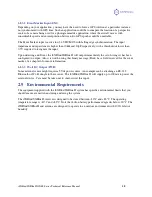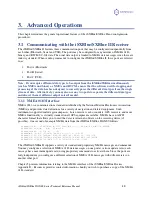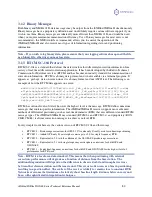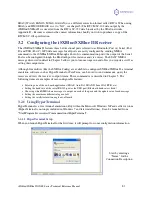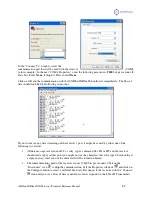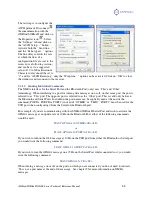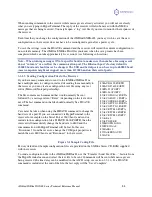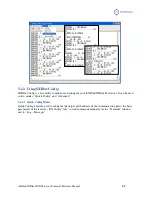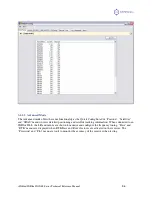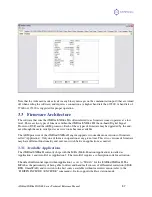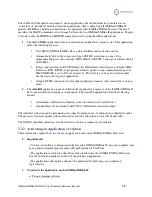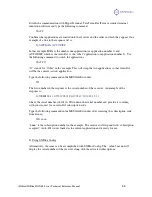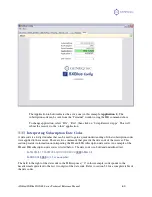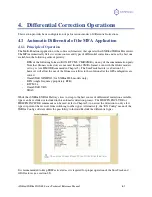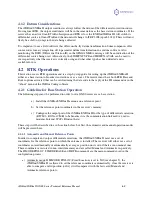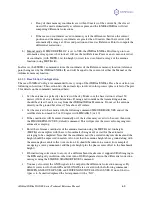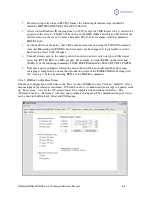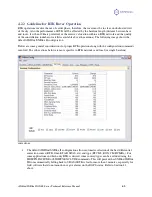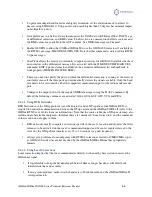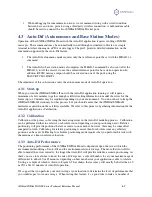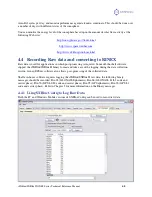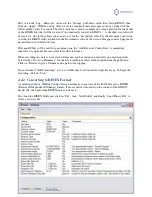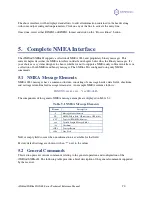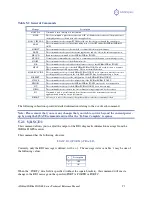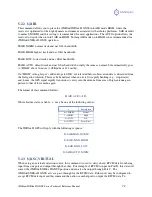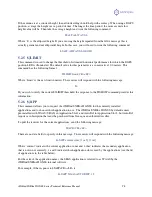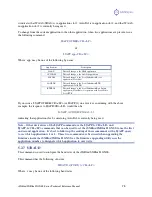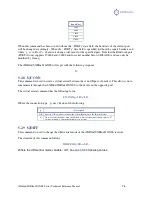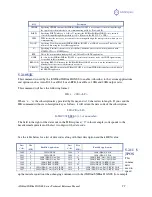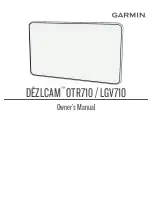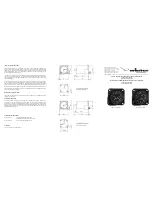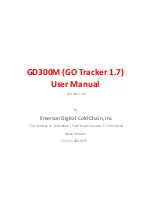
iSXblue/SXBlue II GNSS Series Technical Reference Manual
62
4.1.2
Datum Considerations
The iSXBlue/SXBlue II output coordinates always follow the datum of the differential correction source.
If using local RTK, the output coordinates will be in the same datum as the base station coordinates. If the
receiver has an active OmniSTAR subscription and RTK is lost, the iSXBlue/SXBlue III will switch its
differential source to OmniSTAR and the datum will change to ITRF 2008 (epoch 2010). There will most
likely be a shift (or jump) in the data being collected.
It is important to use a field software that offers on-the-fly datum transformation. Some companies offer
source codes for easy integration of 14-parameter datum transformation in a custom software. Also
monitoring the DSID (Differential Station ID) in the GPGGA NMEA message will be an indication of the
differential source being used. Alternatively, the $JDIFFX,TYPE and $JDIFFX,AVAIL can be used to
see respectively what the receiver is currently using and what other type has been detected and is
available for use.
4.2
RTK Operations
This section covers RTK operations and is a step-by-step guide for setting up the iSXBlue/SXBlue II
either as a base station to broadcast corrections or as a rover. The receiver must have both RTK Base and
Rover options activated; this can be verified using the date code in the reply of the $JI command or in the
“About” menu of the SXBlue Config software.
4.2.1
Guideline for Base Station Operation
The following steps must be performed in order to set a GNSS receiver as a base station:
a)
Install the iSXBlue/SXBlue II antenna on a reference point
b)
Set the reference point coordinates in the receiver’s memory
c)
Configure the output port of the iSXBlue/SXBlue II for the type of differential correction
(RTCM 3, ROX or CMR) to be broadcast via the communication link used (ex. radio
modems, Internet, Wi-Fi, Bluetooth, etc)
These steps will be described in a sub-section below, but first, the automatic and manual operation modes
will be presented here.
4.2.1.1
Automatic and Manual Reference Points
In order to compute and output differential corrections, the iSXBlue/SXBlue II must use a set of
coordinates for the reference point on which the antenna is installed. The receiver will either use a set of
coordinates entered manually or automatically average a position on its own if there are no manual ones.
These coordinates are stored in non-volatile memory and are called Manual and Automatic respectively.
The $JMODE,FIXLOC, $JMODE,BASE and $JRTK commands are the main commands used in the
configuration process.
a)
Automatic mode. If $JMODE, FIXLOC (Fixed Location) is set to NO (see chapter 5), the
iSXBlue/SXBlue II is allowed to set the reference coordinates automatically. Once the receiver is
able to compute a valid position (or fix) it will compare it with the last saved Manual and
Automatic reference points.

